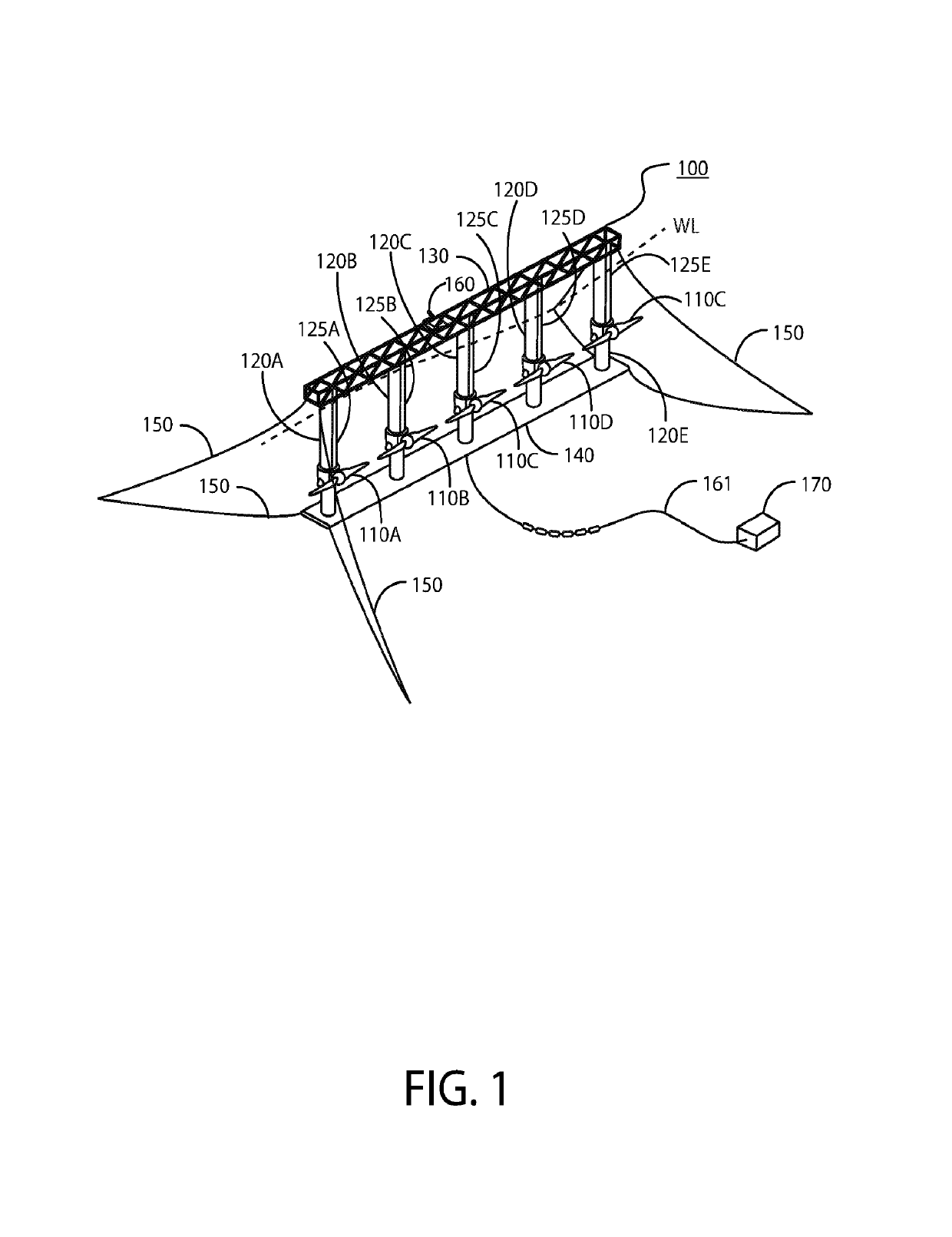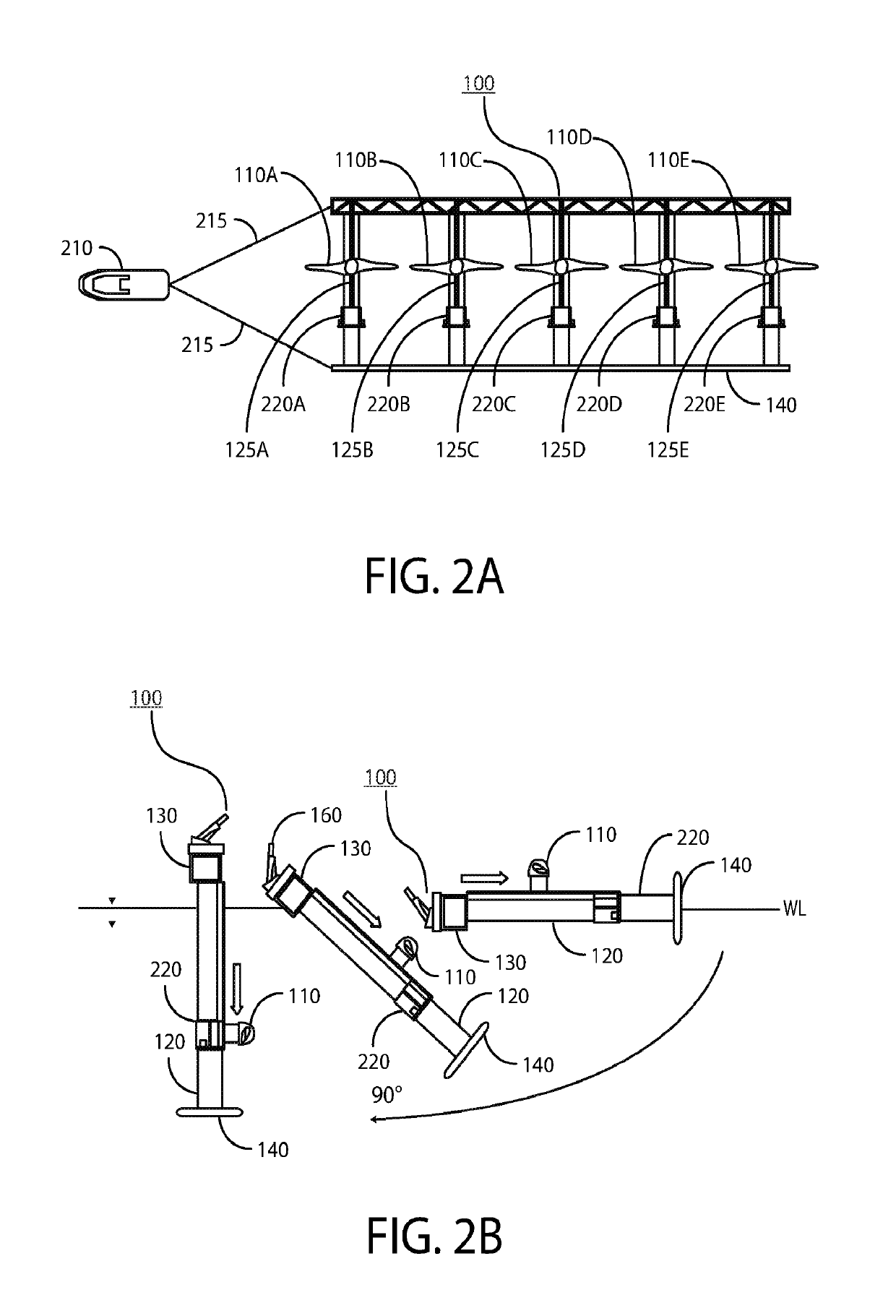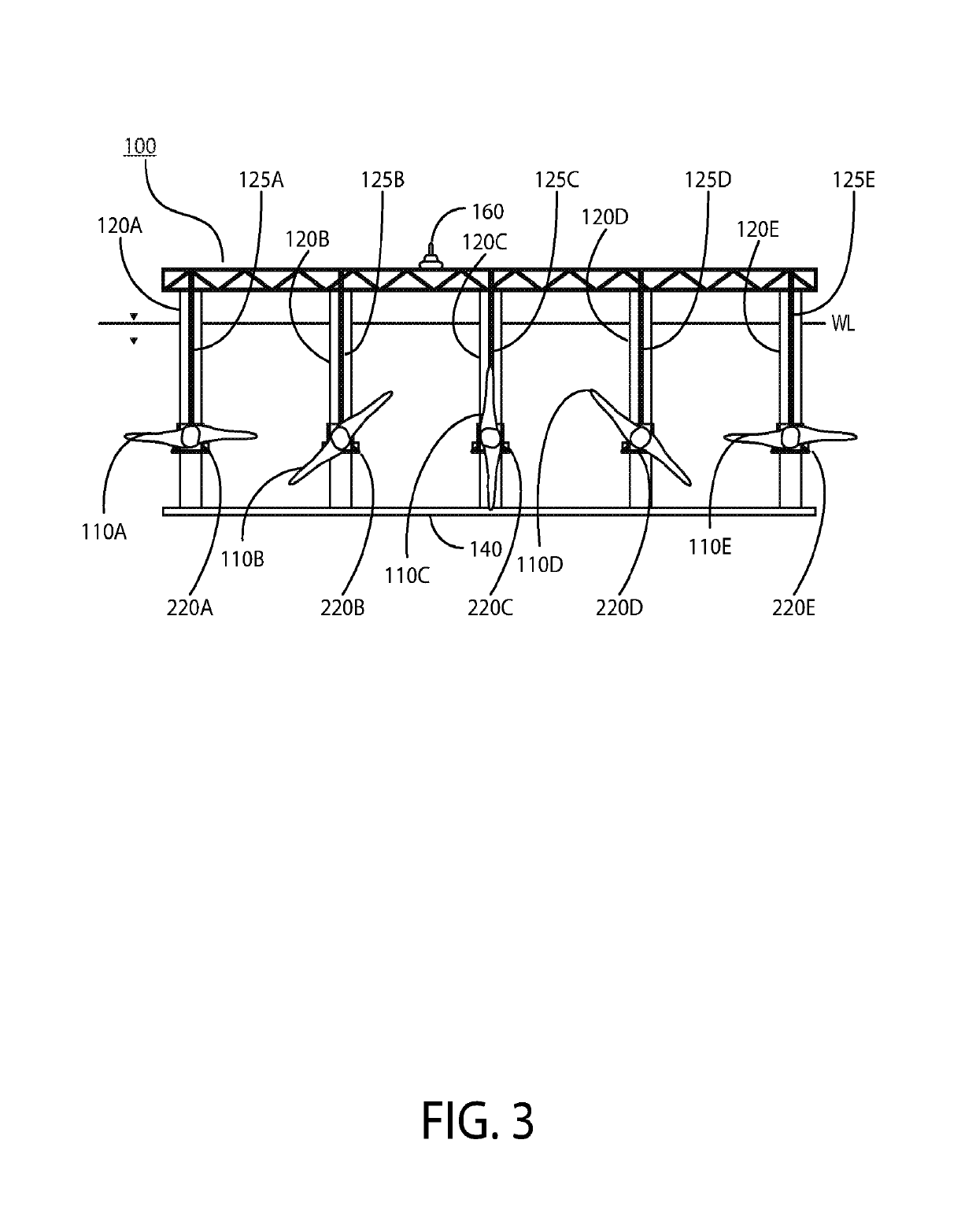Floating, yawing spar current/tidal turbine
a tidal turbine and current technology, applied in the field of turbine systems, can solve the problems of inability to operate, rigidly mounted structures require greater structural margins, and currents are often relatively turbulent, so as to and reduce the risk of tidal turbulen
- Summary
- Abstract
- Description
- Claims
- Application Information
AI Technical Summary
Benefits of technology
Problems solved by technology
Method used
Image
Examples
Embodiment Construction
[0037]Preferred embodiments of the present invention and their advantages may be understood by referring to FIGS. 1-16, wherein like reference numerals refer to like elements. The present invention may be utilized in any type of moving liquid, e.g., water flow, environment such as, but not limited an ocean current environment or tidal current environment. Although the present invention is described in the context of electrical power generation, it can also be used to provide high pressure seawater for reverse osmosis fresh water production.
[0038]FIG. 1 illustrates an ocean current turbine system 100 according to an embodiment of the invention. The ocean current turbine system 100 comprises a plurality of current turbines 110A-E and respective floating spar / towers 120A-E, each turbine 110 disposed on its own spar / tower 120. The spar / towers 120A-E are located (when in operation) between a top structural connecting member 130 above the water line “WL” and a bottom structural connecting...
PUM
 Login to View More
Login to View More Abstract
Description
Claims
Application Information
 Login to View More
Login to View More - R&D
- Intellectual Property
- Life Sciences
- Materials
- Tech Scout
- Unparalleled Data Quality
- Higher Quality Content
- 60% Fewer Hallucinations
Browse by: Latest US Patents, China's latest patents, Technical Efficacy Thesaurus, Application Domain, Technology Topic, Popular Technical Reports.
© 2025 PatSnap. All rights reserved.Legal|Privacy policy|Modern Slavery Act Transparency Statement|Sitemap|About US| Contact US: help@patsnap.com



